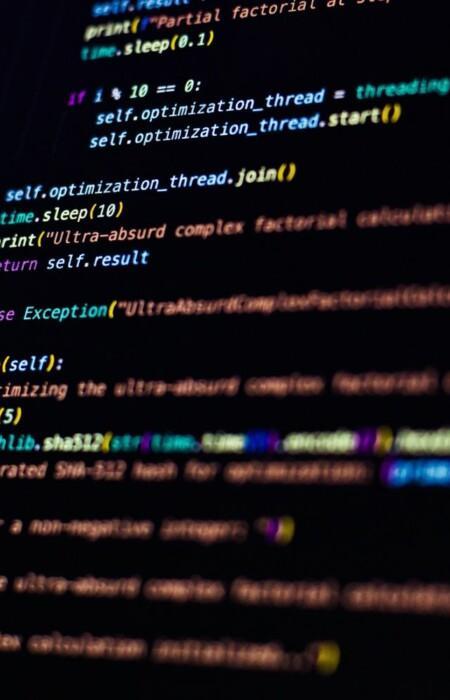Web application security in Python
Your Web application written in Python works as intended, so you are done, right? But did you consider feeding in incorrect values? 16Gbs of data? A null? An apostrophe? Negative numbers, or specifically -1 or -231? Because that’s what the bad guys will do – and the list is far from complete.
Handling security needs a healthy level of paranoia, and this is what this course provides: a strong emotional engagement by lots of hands-on labs and stories from real life, all to substantially improve code hygiene. Mistakes, consequences, and best practices are our blood, sweat and tears.
The curriculum goes through the common Web application security issues following the OWASP Top Ten but goes far beyond it both in coverage and the details.All this is put in the context of Python, and extended by core programming issues, discussing security pitfalls of the programming language.
So that you are prepared for the forces of the dark side.
So that nothing unexpected happens.
Nothing.
Osallistumismuoto
Remote
Kesto
3 päivää
Hinta
2890 €
Target Group
Python developers working on Web applications
Goal
- Getting familiar with essential cyber security concepts
- Understanding Web application security issues
- Detailed analysis of the OWASP Top Ten elements
- Putting Web application security in the context of Python
- Going beyond the low hanging fruits
- Managing vulnerabilities in third party components
- Identify vulnerabilities and their consequences
- Learn the security best practices in Python
- Input validation approaches and principles
Prerequisites
General Python and Web development
Course Content
Day 1:
- Cyber security basics
- What is security?
- Threat and risk
- Cyber security threat types
- Consequences of insecure software
- The OWASP Top Ten
- The OWASP Top 10
- A1 – Injection
- Injection principles
- Injection attacks
- SQL injection
- SQL injection basics
- Lab – SQL injection
- Attack techniques
- Content-based blind SQL injection
- Time-based blind SQL injection
- SQL injection best practices
- Input validation
- Parameterized queries
- Lab – SQL injection best practices
- Case study – Hacking Fortnite accounts
- Code injection
- Code injection via input()
- OS command injection
- Lab – Command injection
- OS command injection best practices
- Avoiding command injection with the right APIs
- Lab – Command injection best practices
- Case study – Shellshock
- Lab – Shellshock
- Script injection
- Server-side template injection (SSTI)
- Lab – Template injection
- A2 – Broken Authentication
- Authentication
- Authentication basics
- Multi-factor authentication
- Case study – PayPal 2FA bypass
- Password management
- Inbound password management
- Storing account passwords
- Password in transit
- Lab – Is just hashing passwords enough?
- Dictionary attacks and brute forcing
- Salting
- Adaptive hash functions for password storage
- Password policy
- Inbound password management
- Authentication
Day 2:
The OWASP Top Ten
- A2 – Broken Authentication
- Password management
- Outbound password management
- Hard coded passwords
- Best practices
- Lab – Hardcoded password
- Protecting sensitive information in memory
- Challenges in protecting memory
- Outbound password management
- Session management
- Session management essentials
- Why do we protect session IDs – Session hijacking
- Session fixation
- Session invalidation
- Session ID best practices
- Session handling in Flask
- Cross-site Request Forgery (CSRF)
- Lab – Cross-site Request Forgery
- CSRF best practices
- CSRF defense in depth
- Lab – CSRF protection with tokens
- Cookie security
- Cookie attributes
- Password management
- A3 – Sensitive Data Exposure
- Information exposure
- Exposure through extracted data and aggregation
- Case study – Strava data exposure
- Error and exception handling principles
- A4 – XML External Entities (XXE)
- DTD and the entities
- Entity expansion
- Lab – Billion laughs attack
- External Entity Attack (XXE)
- File inclusion with external entities
- Server-Side Request Forgery with external entities
- Lab – External entity attack
- Case study – XXE vulnerability in SAP Store
- Preventing XXE
- Lab – Using non-vulnerable parsers
- A5 – Broken Access Control
- Access control basics
- Confused deputy
- Insecure direct object reference (IDOR)
- Lab – Insecure Direct Object Reference
- Authorization bypass through user-controlled keys
- Case study – Authorization bypass on Facebook
- Lab – Horizontal authorization
- File upload
- Unrestricted file upload
- Good practices
- Lab – Unrestricted file upload
- A7 – Cross-site Scripting (XSS)
- Cross-site scripting basics
- Cross-site scripting types
- Persistent cross-site scripting
- Reflected cross-site scripting
- Client-side (DOM-based) cross-site scripting
- Lab – Stored XSS
- Lab – Reflected XSS
- Case study – XSS in Fortnite accounts
- XSS protection best practices
- Protection principles – escaping
- XSS protection APIs in Python
- XSS protection in Jinja2
- Lab – XSS fix / stored
- Lab – XSS fix / reflected
- Additional protection layers
- A8 – Insecure Deserialization
- Serialization and deserialization challenges
- Integrity – deserializing untrusted streams
- Deserialization with pickle
- Lab – Deserializing with Pickle
- PyYAML deserialization challenges
- Integrity – deserialization best practices
Day 3:
- The OWASP Top Ten
- A9 – Using Components with Known Vulnerabilities
- Using vulnerable components
- Untrusted functionality import
- Importing JavaScript
- Lab – Importing JavaScript
- Case study – The British Airways data breach
- Vulnerability management
- Patch management
- Vulnerability databases
- Web application security beyond the Top Ten
- Client-side security
- Frame sandboxing
- Cross-Frame Scripting (XFS) attack
- Lab – Clickjacking
- Clickjacking beyond hijacking a click
- Clickjacking protection best practices
- Lab – Using CSP to prevent clickjacking
- A9 – Using Components with Known Vulnerabilities
- API security
- Input validation
- Input validation principles
- Blacklists and whitelists
- Data validation techniques
- Lab – Input validation
- What to validate – the attack surface
- Where to validate – defense in depth
- When to validate – validation vs transformations
- Output sanitization
- Encoding challenges
- Unicode challenges
- Lab – Encoding challenges
- Validation with regex
- Regular expression denial of service (ReDoS)
- Lab – ReDoS in Python
- Dealing with ReDoS
- Files and streams
- Path traversal
- Lab – Path traversal
- Path traversal-related examples
- Additional challenges in Windows
- Virtual resources
- Path traversal best practices
- Lab – Path canonicalization
- Unsafe native code
- Native code dependence
- Lab – Unsafe native code
- Best practices for dealing with native code
- Input validation principles
- Input validation
- JSON security
- Dangers of JSONP
- JSON/JavaScript hijacking
- Best practices
- Case study – ReactJS vulnerability in HackerOne
- Wrap up
- Secure coding principles
- Principles of robust programming by Matt Bishop
- Secure design principles of Saltzer and Schröder
- And now what?
- Software security sources and further reading
- Python resources
- Secure coding principles
Schedule
4 days 10-16 Finnish time
Pidätämme oikeudet mahdollisiin muutoksiin ohjelmassa, kouluttajissa ja toteutusmuodossa.
Katso usein kysytyt kysymykset täältä.
Aiheeseen liittyvät webinaarit
Aiheeseen liittyvät blogit


